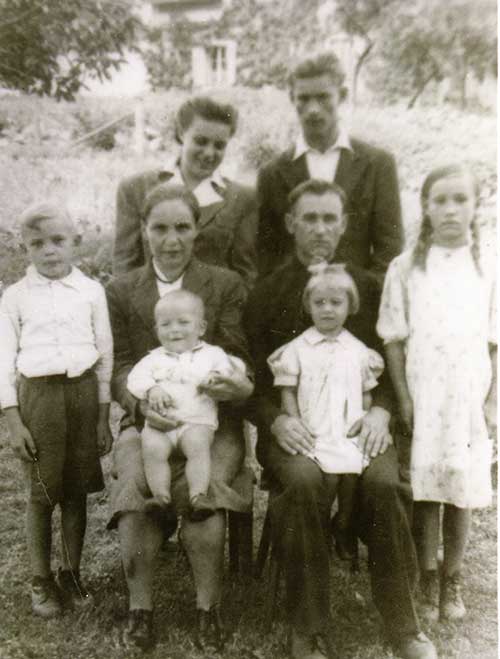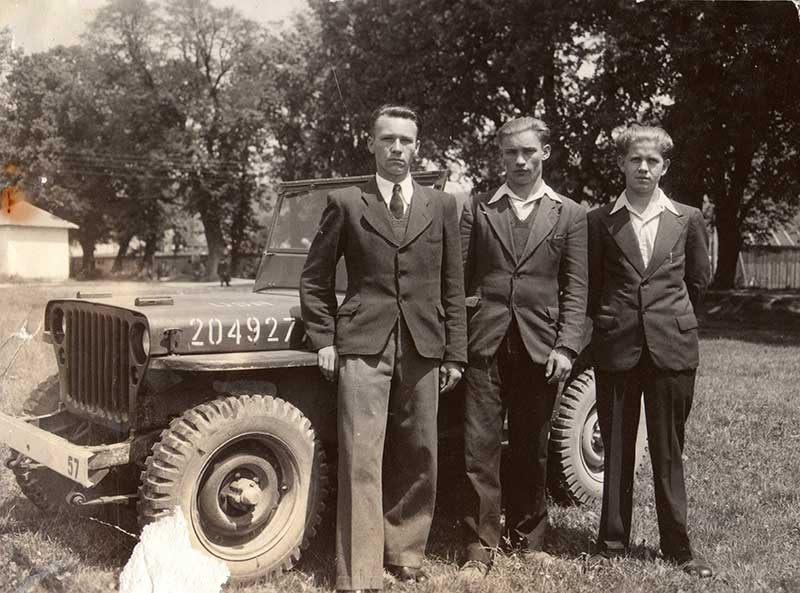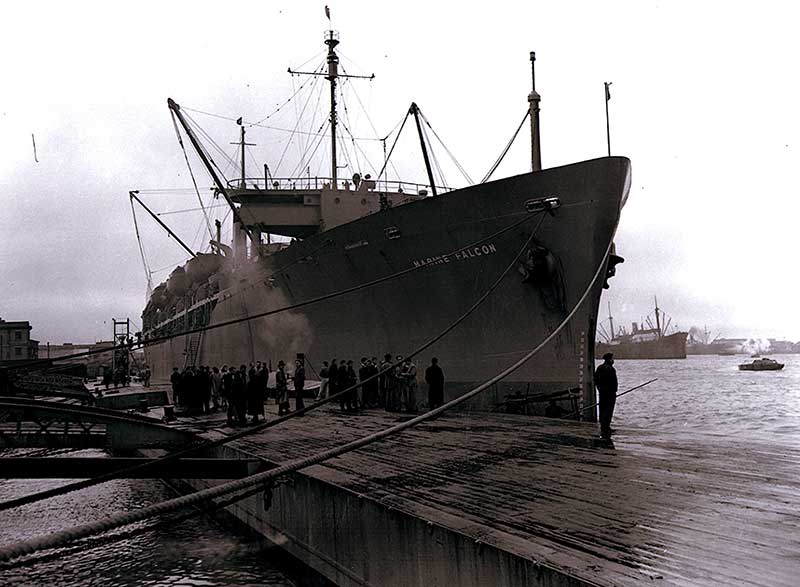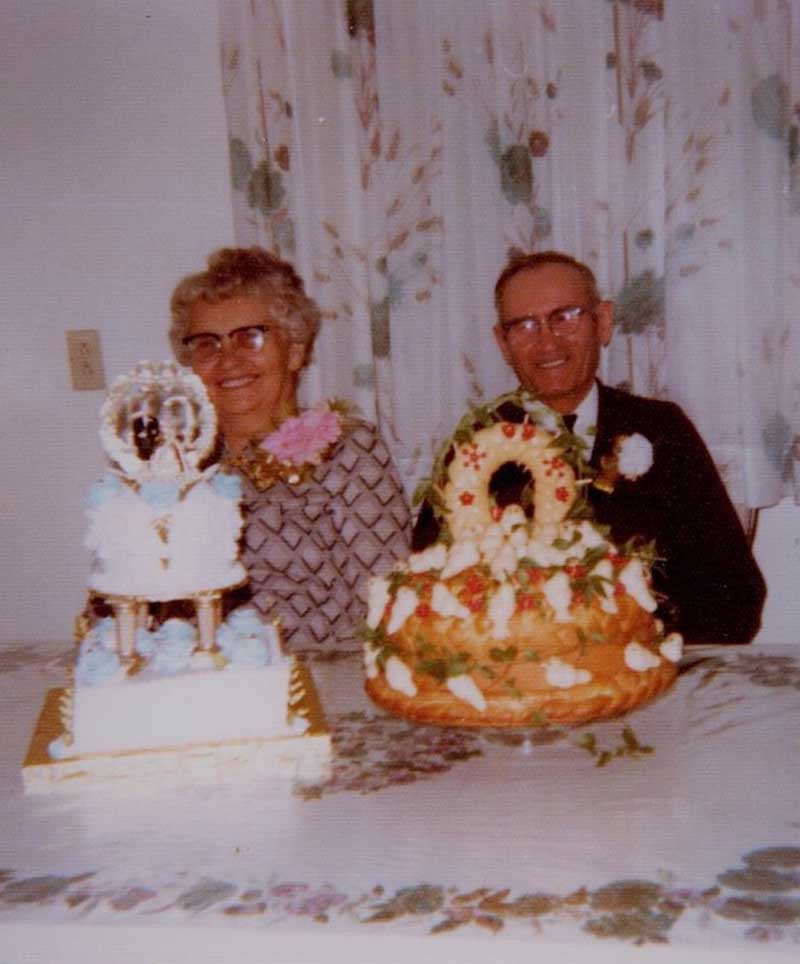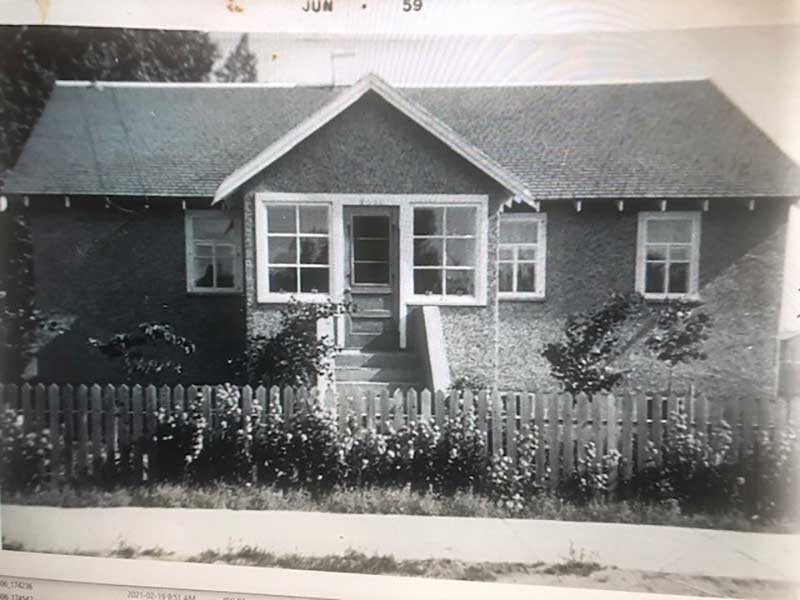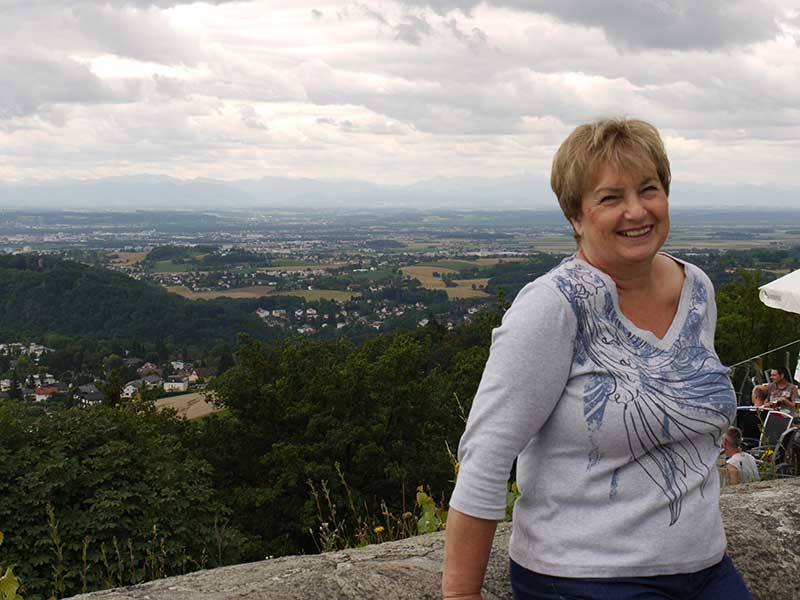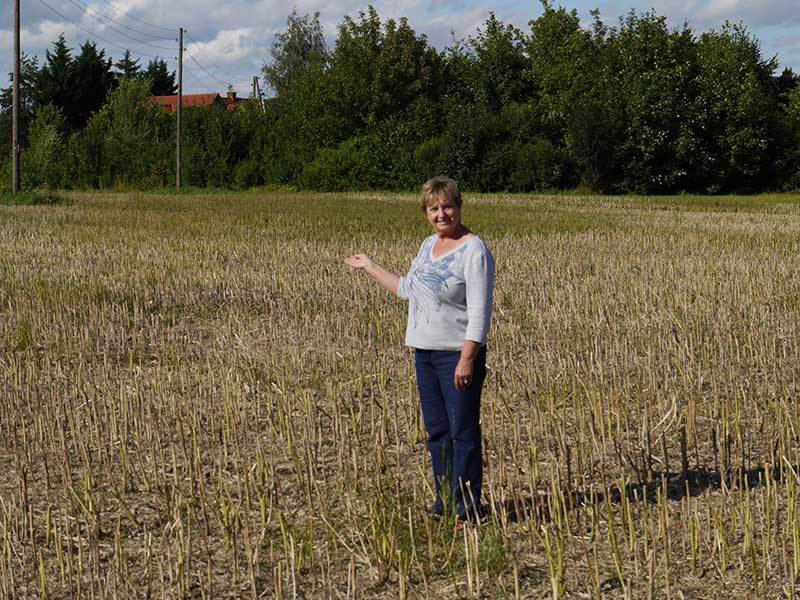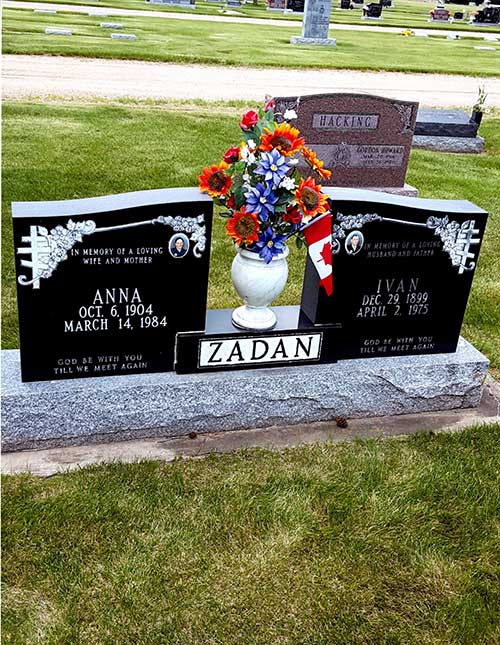Sobey Wall of Honour
Column
131
Row
17
From Tyranny to Freedom
The Ivan and Anna Zadan Family History
May 8th, 1945 the air was fresh and the taste of freedom was exhilarating to Ivan Zadan. As the gates of the forced labour camps were flung open, Ivan walked out and quickly gathered his family. It was 3 years earlier that the Zadan family were placed in forced labour camps in Linz, Austria. They had been taken out of Ukraine by the advancing German Army, placed in cattle cars of a train and sent to Linz, then put into forced labour. At Linz the family were spilt up into 3 different camps, each assigned different jobs. The family were allowed visitation time, but they were not allowed to live together.
Everything changed on May 8th 1945, World War II had come to an end in Europe. A cease fire order was in place, and the gates of the labour camps were opened. The Zadan family were free, but where would they go? Stripped of all their belongings, no farm or home to go to, the clothes on their backs were their only possessions.
Years earlier from 1929 to 1935, the Zadan family had been exiled to the desolate Siberian forests of Russia, by Stalin and his Red Army thugs. Their only crime was being a land owner in the Ukraine, growing food for their fellow man. Their farm was confiscated by Stalin and turned into a headquarters for the Communist authorities. The family, stripped of their farm and home, were then “separated” and “forced” into cattle cars of the train and sent to Siberia. By 1933 Ivan Zadan was successful in getting his family out of Siberia, using fake documents obtained from a detained Ukrainian Doctor. In 1935, Ivan was able to escape and return to the local area where their farm and other family members lived. Because Ivan had escaped from Siberia, the Communist authorities were searching for him. They were determined to send him back to the Siberian work camps, because nobody escapes Stalin.
Working at different jobs and moving around the countryside in Ukraine, Ivan was able to elude the Communist authorities and reunite with his family. This all changed in the spring of 1942, when the German Army offensive moved through the Ukraine to the border of Russia.
In the aftermath of this offensive, many Ukrainian families including the Zadan family, were rounded up and sent to either Austria or Germany and placed in forced labour camps for the duration of the war.
As World War II ended in Europe, freedom was reinstated to these families. The realization set in that they did not have homes or places to go to, thus they became “displaced persons”. Linz the 3rd largest city in Austria, is divided by the fast flowing Danube River. The north side of the river was the location of the forced labour camps, where the Zadan family were exiled to. This was also the area of Austria being liberated by Stalin’s Red Army. As news reached Ivan that Stalin’s army was close to the city, Ivan made the decision to gather his family and try to leave the city heading south. Capture by the Red army would mean certain exile to Siberia or maybe even death for Ivan and his family.
From the camps, Ivan’s family quickly gathered as many items as they could carry. Blankets, sheets, food items and cooking utensils were rolled up in heavy blankets with cords to secure them on their backs. The Zadan family consisted of Ivan, his wife Anna, and 5 children: Mary age 19, John age 17, Nina age 8, Nick age 5, and Valentina 1 year old. Not only would they have to pack supplies, but two young children would need caring and attention as well.
Looking south from Linz, lay the Alps mountains, and Ivan hoped here they would find a friendlier ally. There was news that the American army was somewhere south and west of Linz. Ivan hoped that he could somehow locate an army base in the Alps that would give his family sanctuary and protection. With compass in hand and packs on their backs, the family of seven headed out of Linz towards the Alps, to an unknown future.
After several days and many harrowing experiences through the mountains, the family found safety in a shepherd’s cabin while waiting out a spring snow storm. As the storm passed, they continued their trek southward and came upon the city of Klagenfurt, located near the Italian border. The distance from Linz to Klagenfurt is approximately 110 miles through very rugged terrain. With determination and hope for the future, Ivan’s family made it safely to Klagenfurt and were able to rest there for a time. In Klagenfurt the family shared their stay with a number of Ukrainian Cossacks, who were also in the city.
After only a few days of rest, the family were awakened early in the morning by the pounding on their door, warning them that the area they were in was no longer a neutral zone. They quickly gathered their meager belonging and once again resumed their trek through the mountains.
This time a stroke of good luck came their way. They stumbled upon an American military base encampment and Ivan Zadan asked for, and was given sanctuary for himself and his family. There was just one little problem, in order to reach this sanctuary, the family would have to hike back through the Alps to the city of Salzburg. Salzburg is located 95 miles north west of Klagenfurt. With the hope of securing freedom for his family and finally able to shed the shackles of bondage, Ivan pointed his compass towards Salzburg and they started the trek northward through the Alps.
After several days of hiking a very exhausted family finally reached the out skirts of Salzburg and the US Army Camp. The camp’s name was Camp Lexenfeld, US Zone. The camp covered a large area, including a US army unit, barracks and accommodation for a large number of displaced families.
Camp Lexenfeld would be home to the Zadan family for the next 3 years. It was here where the International Refugee Organisation would care for and make plans for final settlement to a new country for the family.
In June 1948, the Zadan family left Austria, boarded the SS Marine Falcon cargo boat at Bremerhaven Germany and sailed off to a new country. Pier 21 in Halifax welcomed Canada’s newest citizens on June 23rd 1948, the Ivan Zadan family. After quickly clearing customs, the family boarded a CPR passenger train bound for Taber Alberta.
After a long train journey through seven provinces, Ivan and Anna with their children, John, Nina, Nick and Valentina finally reached their destination, Taber Alberta.
Before leaving Austria Ivan had signed an agreement that he would work for a sponsoring sugar beet farmer for a period of two years. Ivan fulfilled this commitment.
At the Taber train station the family were met by their sponsoring Farmer, who loaded the family into the box of his grain truck. Upon arriving at the farm, the Zadan family were introduced to their new home. An old wooden grain bin had been converted into a two room make shift house. Although these were meager beginnings, the Zadan’s were truly appreciative and blessed to begin their life in a new Country of freedom and hope.
The Zadan’s oldest daughter, Mary, had married while they were ensconced at camp Lexenfeld and was unable to travel with the rest of the family. Mary and her husband, Fred, and baby son were granted Settlement certificates, and under sponsorship came to Canada in 1949. Mary and Fred were sponsored by a farmer at Iron Springs, Alberta. After completing their two year sponsorship, Mary and Fred moved to Taber and once again joined the family unit.
This article is but a very brief summary of the Family Zadan history. There is so much more to their unbelievable story. I am hopeful that the details of their years of confinement and suppression by two of the world’s most evil dictators, Stalin and Hitler, will be written and preserved for future family members to know and understand what Ivan an Anna Zadan endured and overcame to secure a home for their family, in a free country.
Written and Researched from oral history of Ivan and Anna Zadan: Lloyd and Valentina (Zadan) Robinson



